Back in 2011 Benjamin A. Snyder wrote an article in which he stated “Every time a museum comes up with a creative and intelligent way to take advantage of their own permanent collection, an angel gets its wings.” Fast Forward to 2021 and museums around the country are giving out wings in spades. Covid-19 threw a wrench in traveling exhibitions; shows planned for years are postponed, giving opportunity for museum collections in storage to come out and fill the galleries.
Museums are getting creative, taking advantage of temporarily dormant galleries to reintroduce their permanent collections to their patrons. Last October, the Museum of Modern Art in New York did a remix of its permanent collection when it unveiled its new $450 million expansion.
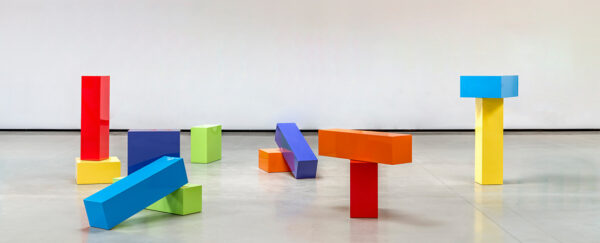
Nasher Mixtape
Closer to home, the Dallas Museum of Art’s collection online page has created categories of colors, climate, the body, technology, and other searchable tags to guide viewers through museum holdings. Across the street from the DMA, the Nasher Sculpture Center has announced a remix of its own. Nasher Mixtape, as the Nasher describes it, is a revisit of the collection: “Rather than presenting variations on a single overarching theme, Nasher Mixtape offers a compilation of ‘tracks,’ micro-exhibitions focused on the Nasher’s permanent collection.”
On a recent visit to the Kimbell Art Museum in Fort Worth (sadly before the opening of its newest exhibition Queen Nefertari’s Egypt), I got to experience the museum’s version of a permanent collection reboot. Dubbed Collections in Conversation, the Kimbell has reinstalled its collection in such a way as to culture jam works of art across centuries and geography, creating some cheeky “conversations” in the process. Below is a selection of my favorites.
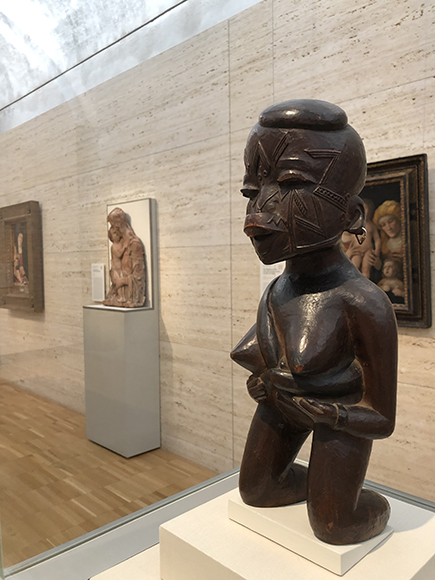
Kneeling Mother and Child, late 19th century
African.
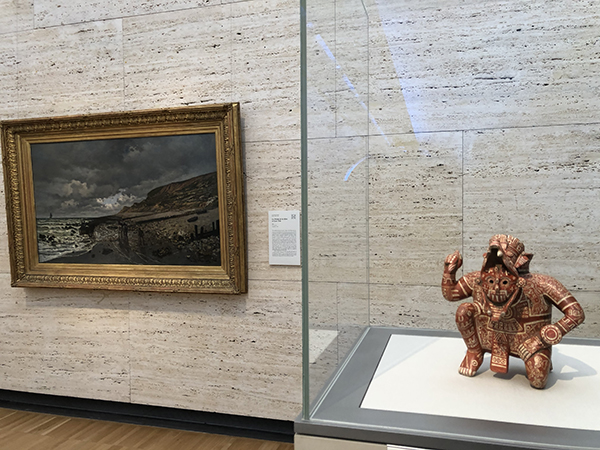
Rain God Vessel, c. 1100–1400 Ancient American: Back: Claude Monet, La Pointe de la Hève at Low Tide, 1865.
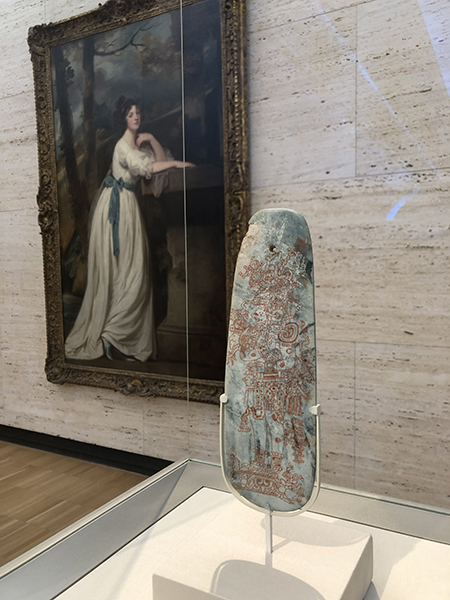

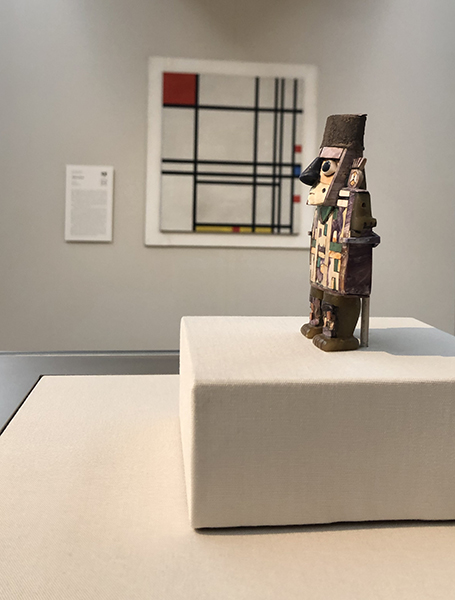
Standing Dignitary, c. A.D. 600–1000, Ancient American; Back: Piet Mondrian, Abstraction, 1939–42 .
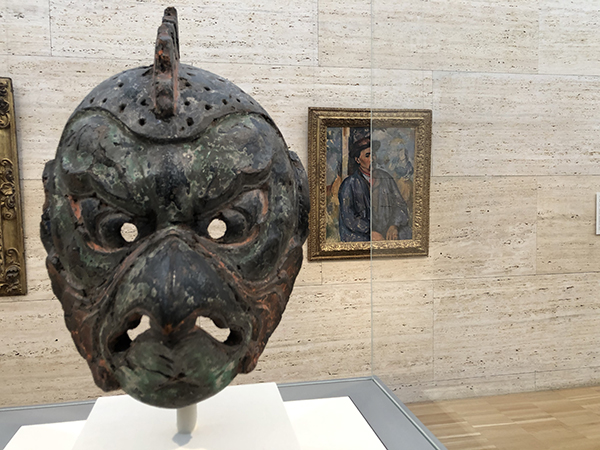
Gigaku Mask of the Karura Type, 8th century, Japanese; Back: Paul Cézanne, Man in a Blue Smock, c. 1896–97.
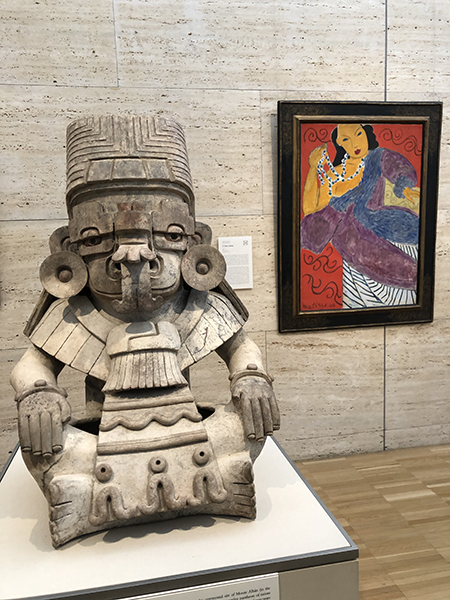
Urn in the Form of Cociyo, God of Lightning and Rain, c. A.D. 400–500 Ancient American; Back: Matisse, “L’Asie”.
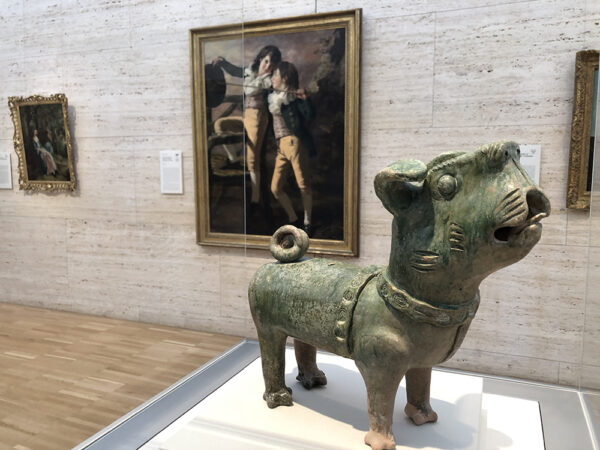
Back: Henry Raeburn, The Allen Brothers (Portrait of James and John Lee Allen), early 1790s; Front: Standing Dog, c. 1st century A.D., Chinese.


